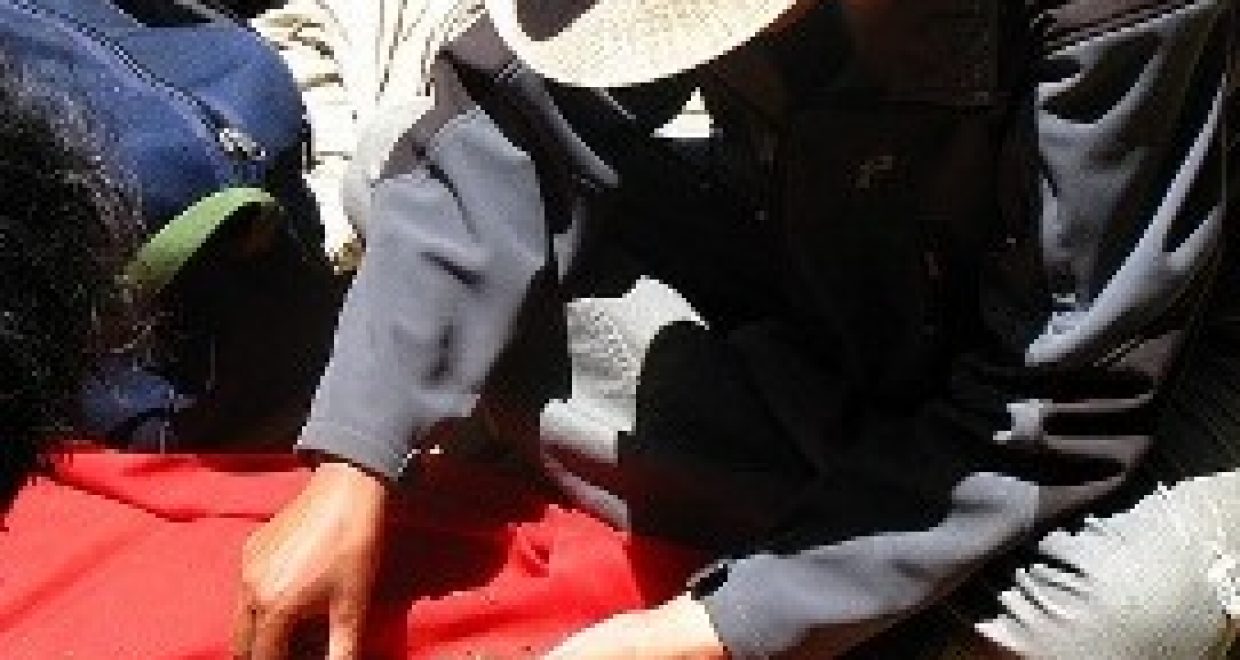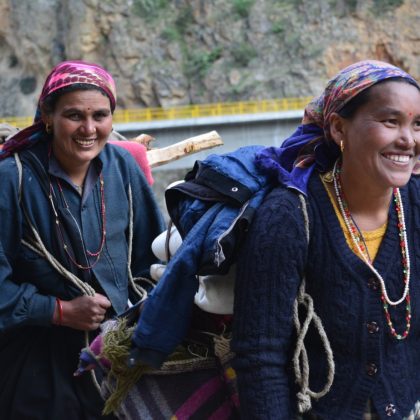Tibet’s fungal gold rush – Imperial College Conservation Science
Tibet’s fungal gold rush – Imperial College Conservation Science.
Arriving in a Tibetan village in May or June – as I did for the first time in 2009 – you will most likely find it eerily quiet, a few old people and children left at home. The mountainous grasslands, in contrast, will be teeming with camps, with anyone who is able spending their days scouring the earth. The prize for these hours of painstaking work comes in the form of the strange and coveted caterpillar fungus. Rural poverty remains high compared to urban areas in Tibetan communities in China, but caterpillar fungus is fuelling a growing cash economy for rural people. Seeing the increasing importance of the fungus, but the lack of research on the environment and poverty on the Tibetan plateau, we carried out the first quantitative analysis of the role of caterpillar fungus and other wild products (matsutake mushrooms and firewood) in household livelihoods. Ensuring a sustainable harvest of these ‘provisioning ecosystem services’ is potentially important for both biodiversity and human wellbeing. The paper has been published in the latest edition of the journal Oryx.
Named ‘yartsa gunbu’ in Tibetan meaning ‘summer grass, winter worm’, the unique structure of the caterpillar fungus is the result of Ophiocordyceps sinensis parasitizing the ghost moth larvae. The fungus grows inside the larvae and emerges from the head of the mummified caterpillar through the earth in the spring time. Important in both Tibetan and Chinese traditional medicine, it is used as a tonic for a wide range of ailments but most famously as an aphrodisiac (it is often dubbed ‘Himalayan Viagra’). I lived in the village of Samdo in Western Sichuan Province during 2010, and carried out in-depth semi-structured interviews with the agro-pastoralist households to understand collection intensity, prices, and changes in access to the wild products through time.
Recognising that non-timber forest products can sometimes be dominated by the wealthiest sections of communities, or actually perpetuate poverty by remaining as low value goods used only by the poorest, we examined how households with different levels of wealth varied in their ability to gain benefits from the products. A complex set of factors explained household collection levels of the highly commodified caterpillar fungus. Younger, larger, pastoralist households could collect more due to their greater labour availability, and access to the grasslands. Collection fits neatly into the lifestyle of Tibetan herders. Those with more education and larger households were able to get a better price due to their ability to negotiate prices and send people down to towns where prices are higher. This contrasted with the simple relationship between household size and firewood collection in the community.
Since the ‘opening up’ and economic liberalisation of China in the early 1980s, the price of caterpillar fungus has sky-rocketed, and the wealthy urban Chinese middle classes give it as a luxury gift which holds prestige and a rugged mystique. It also has a growing international market, and nowadays you are just as likely to find it in a herbal medicine shop in London. We found the fungus to be contributing an astonishing 72% of household income, with an average of $2.60 per piece. Although poorer households with fewer members had less access, they still gained significantly, and richer households could not monopolize the market, suggesting that caterpillar fungus is alleviating poverty. All households in the community were collecting the fungus, preferring it to unskilled manual labour – the other means of cash for a rural population which remains largely uneducated.
With high rates of collection, there is concern over falling production and sustainability but a lack of reliable data. Given the heavy dependence on the fungus, a decline in harvest rates or price would be potentially catastrophic for many people across the Himalayan region. Although we found that the intensity of collection has increased and expanded geographically, we did not find evidence of a decline, but rather variation with weather conditions and greater competition. Competition has in fact been so intense that it has sparked violent conflict between communities resulting in several deaths in Samdo in 2007. What may be more significant for conservation is the effect of large numbers of people digging and living on the fragile grasslands during the peak months. Our research shows that any conservation interventions would need to be sensitive to the livelihoods of rural people on the Tibetan Plateau, and their high dependency on the diverse ecosystem services provided by the forest and grasslands.






